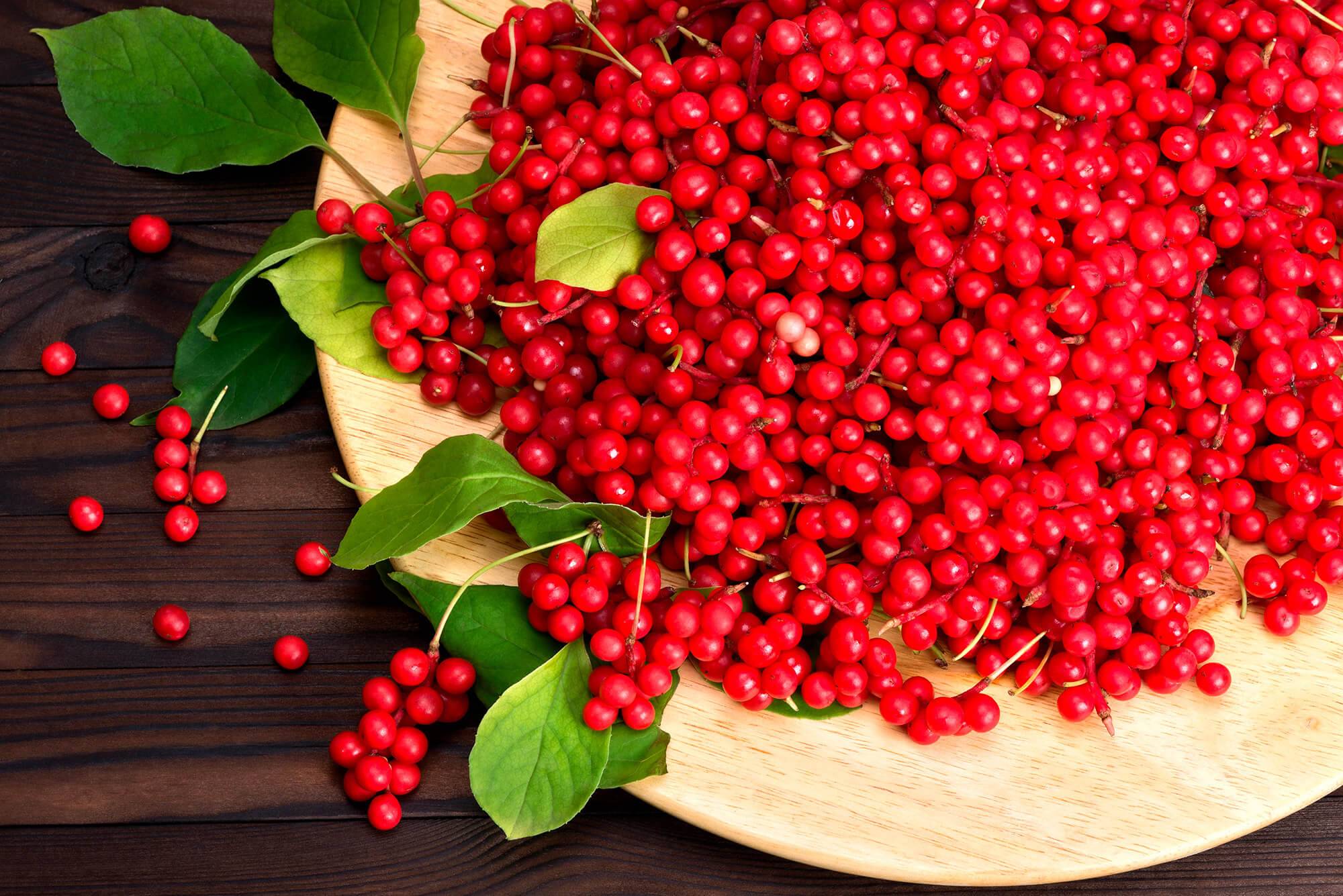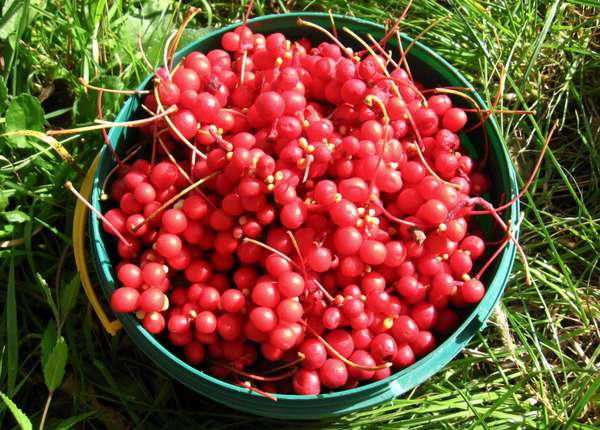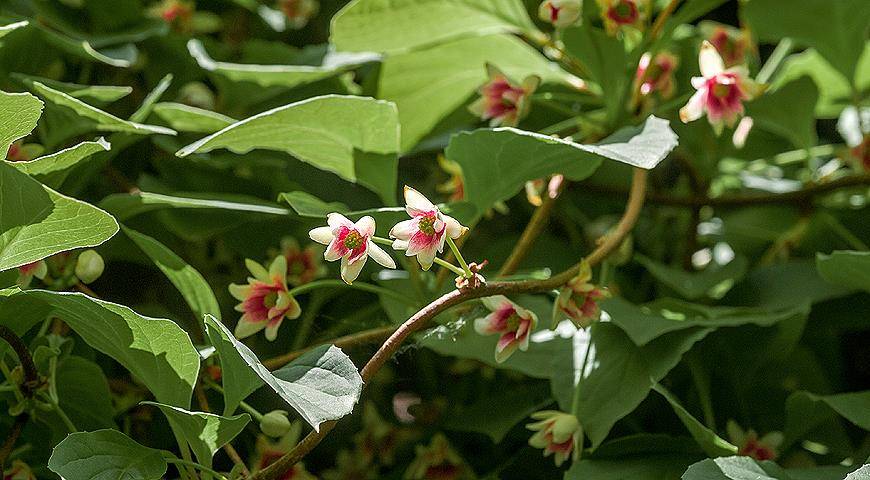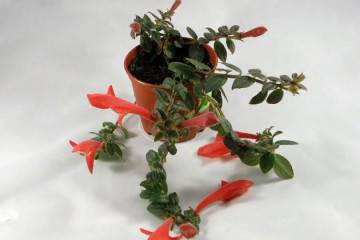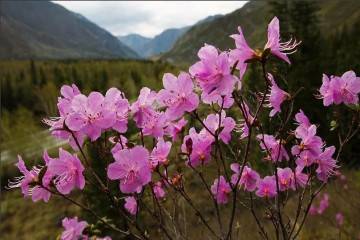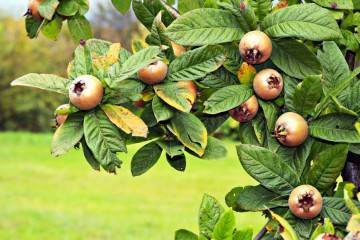Far Eastern lemongrass - cultivation and care
Content:
Far Eastern Schisandra belongs to the category of plants of the Schisandra family. Perennial climbing shrubs can entangle the supporting structure as well as lianas. As a rule, ornamental culture is planted near fences and walls. Sour perennial berries are colored bright red. The fruits have a large number of useful properties, which is an undoubted advantage.
Common varieties
You can meet this perennial on Sakhalin, Yakutia, Primorsky Territory, Kamchatka and the Amur. Breeding lemongrass is a rather interesting and uncomplicated process that even novice gardeners undertake.
To date, experts distinguish 2 home varieties of climbing culture:
- The firstborn is a variety characterized by increased frost resistance, resistance to fungal infections and pest infestations. The diameter of the cylindrical fruits reaches 6.5-7 mm. Their mass is within 0.6 g. A pronounced sour taste is present in the juicy pulp. The skin of the berries is dense. The juice can be easily separated by pressing.
- Sadovy 1 is a category of fast-growing high-yielding liana, which is capable of producing a large yield of juicy fruits. The aroma spreads throughout the territory in which the culture grows.
The garden culture has an incredible smell, even the branches of the Far Eastern lemongrass exude a citrus aroma. During the preparation of the fruit infusion, a pleasant aroma remains in the drink.
Medicinal properties and history of use
Lemongrass root, lemongrass vine and its fruits contain a large number of useful elements that make it possible to cope with:
- expansion of peripheral vessels;
- a decrease in blood sugar levels;
- high cholesterol;
- lowered cholesterol;
- oncological diseases.
Far Eastern lemongrass: cultivation and care
Seedlings of a perennial culture take root quickly enough. In the first months after planting, care should be taken to protect the seedlings from direct sunlight on the leaf plates. In order to speed up the survival process, it is necessary to systematically moisten the soil and weed the weeds. On hot days, experts recommend spraying leaf plates.
Top dressing begins to be applied 3 years after the seedlings have been planted. In mid-spring, saltpeter is introduced into the area of the trunk circle. The surface of the soil is abundantly moistened.
After absorbing moisture, the planting zone is mulched. For this purpose, you can use a layer of leaf compost or humus. In the summer months, the plant needs additional feeding, which includes mullein or chicken droppings.
Support
Experts recommend growing perennials on trellises. This will improve the illumination of the culture and make it possible to increase the size characteristics of the fruits. When growing lemongrass without supports, fruiting will be minimal, if not completely absent.
Trellises are installed during the planting of seedlings. To build them, it is necessary to prepare pillars, the length of which reaches 3-3.5 m. Between the supports deepened into the ground, a wire is stretched in several rows.
Perennial shoots are fanned out. In the first 12 months, they remain on the trellis.
Pruning
The first pruning should be done at 2 years of plant life. During this period, the aboveground part begins to develop especially actively. It is recommended to leave only a few branches on the bushes. The rest are cut at ground level.
Pruning is done during the fall months. With a strong thickening of the vines, you can prune in the middle of summer. In winter, it is better not to perform the procedure, since during this period, the stems of lemongrass begin to cry. Root shoots are removed in spring.
To make lemongrass look more well-groomed, do not ignore the need for sanitary pruning, during which dry and broken shoots are removed. Long branches are shortened so that 10 buds remain on each branch.
If the grower takes proper care of the crop, he is unlikely to face growing problems. Far Eastern lemongrass will grow into a beautiful, massive bush and will delight you with delicious fruits.
Features of care in winter and during rest
Despite the high level of winter hardiness, perennial crops need winter shelter.
If there is a desire to grow healthy bushes, experts recommend covering the root system with a layer of dry foliage, the thickness of which reaches 12-16 cm. Spruce branches are laid on top of the foliage, scaring away rats and mice.
When and how it blooms
Growing a plant is not only easy, but also fun. The crop looks especially attractive during the flowering period. In the axils of the leaf plates, small buds are formed, which are painted in white. In female flowers, greenish pistils are visible, and in male flowers there are 3 sessile stamens.
During the flowering period of the Far Eastern lemongrass, the garden looks very beautiful and attractive. In addition, a fresh scent spreads around the site.
Reproduction
Reproduction of culture is possible in several ways:
- seed;
- layering;
- by cuttings.
When using the seed method, it is advisable to sow seeds in the seedling substrate at the end of winter. Crops are covered with polyethylene material. Every day, the shelter is removed for the purpose of airing, and the soil is moistened with a spray bottle. After 10-12 days, seedlings will appear in the containers. As soon as a 3 leaf plate appears on the shoots, you can proceed to transplanting seedlings.
It is advisable to take boxes with young plants outside for hardening every day. After 14-21 days, you can plant seedlings in open ground. The recommended distance between plantings is 22-35 cm.
To use the cuttings method, it is necessary to prepare in advance the upper parts of the young shoots. The lower sections of the cuttings are soaked in Kornevin's solution (dosage according to the instructions) throughout the day. After a specified period of time, the cuttings are planted in a previously prepared container filled with wet sand. After planting the branches, the container is covered with a piece of glass. After 30-60 days, the cuttings take root and can be planted in the garden.
For propagation of Chinese liana, you can use the method of obtaining a seedling by layering. In mid-spring, the branches of a lemon perennial bend to the surface of the soil in the area of the mother bush and are covered with a layer of soil mixture, which includes peat and humus. The tops of the layers are fixed on the trellis. After 4-5 months, the layers take root completely, however, they can be transplanted to a permanent place only after 24 months.
Home transplant
Lemongrass does not tolerate transplanting very well. Even a slight drying of the root system can lead to the death of the bush. In order to transplant a culture, you will need:
- dig a hole in a new place;
- apply fertilizer into the deepening;
- dig up lemongrass with a root ball of earth;
- move it to a new place and fill the resulting voids in the pit with soil.
Healing properties
Far Eastern lemongrass is a real find for connoisseurs of traditional medicine. The plant contains in its composition a number of useful elements that will help to cope with any disease. Using the fruits, stems and roots of the plant, you can prepare:
- the juice;
- fruit drink;
- syrup;
- tincture;
- teas.
Roots, vines and stems must be crushed and filled with 1 liter of boiling water or brewed in an enamel saucepan for about 20 minutes. After infusing the product for 60 minutes, you can drink it daily before breakfast, lunch and dinner.
It is difficult to overestimate the benefits of Far Eastern lemongrass. Correct use of a perennial will allow you to cope with a large number of ailments. The fruits contain a large percentage of trace elements, vitamins and mineral salts. However, before taking infusions, you should familiarize yourself with the contraindications.
